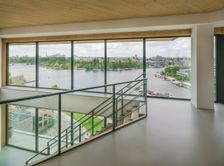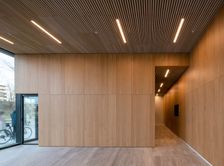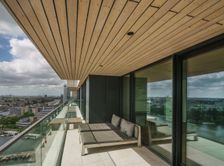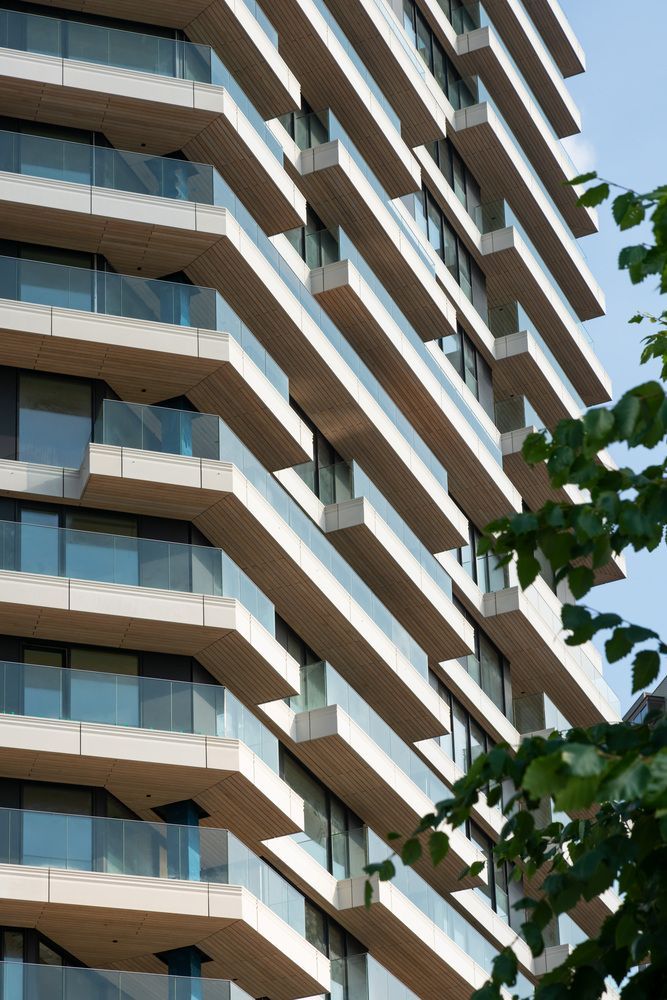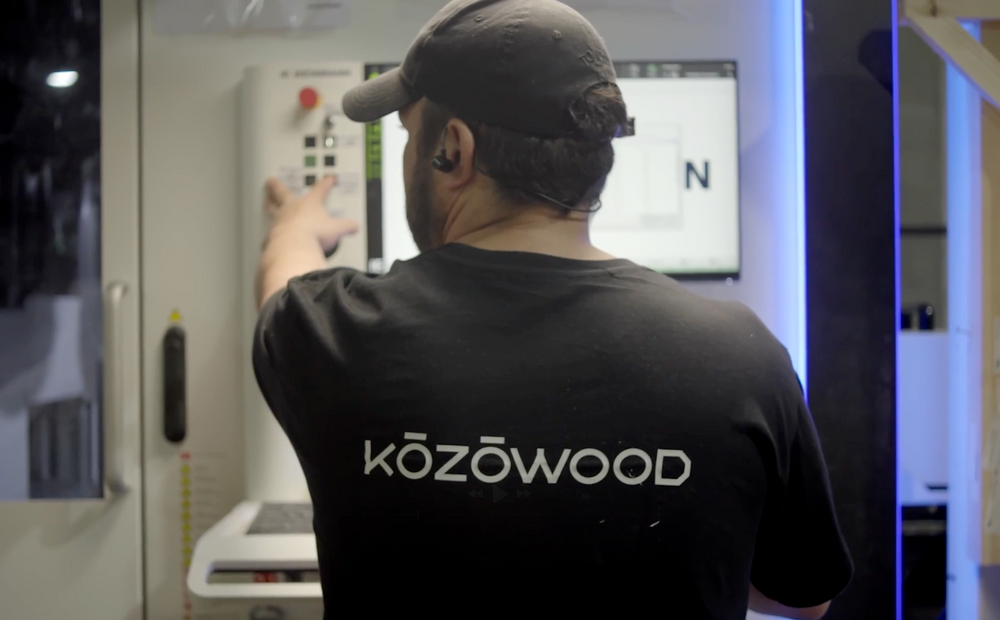(01)
Climate Goals
To achieve its climate goals, the Netherlands has committed to becoming climate neutral by 2050. Using timber as a building material is one of the most effective ways of accelerating decarbonisation, as the associated carbon footprint is much lower compared to concrete or steel. In addition, the timber acts as a carbon storage for decades to come. More and more organisations are embracing the climate positive qualities of timber. In 2021, over 80 Dutch companies signed the Green Deal covenant Houtbouw of the Metropoolregio Amsterdam. With this covenant Amsterdam is committing to the goal of building at least 1 in 5 residential buildings using timber as the main structural material, from 2025 onwards.
Back in 2016, when Amsterdam issued a tender for a building plot near the Amstel river, the municipality emphasised the importance of the designs being both sustainable and of high architectural quality. Together with developer Lingotto and Team V Architectuur, Arup designed a revolutionary timber-hybrid residential tower, standing an impressive 73 metres tall, with a transparent and robust appearance. Flexible floor plans provided future residents with the freedom to personalise their living space.
To engineer this bio-based high rise residential building, our team of specialists delivered the sustainable, structural and technical design as well as building physics, acoustics and fire engineering. HAUT was completed in 2022.
(02)
HAUT
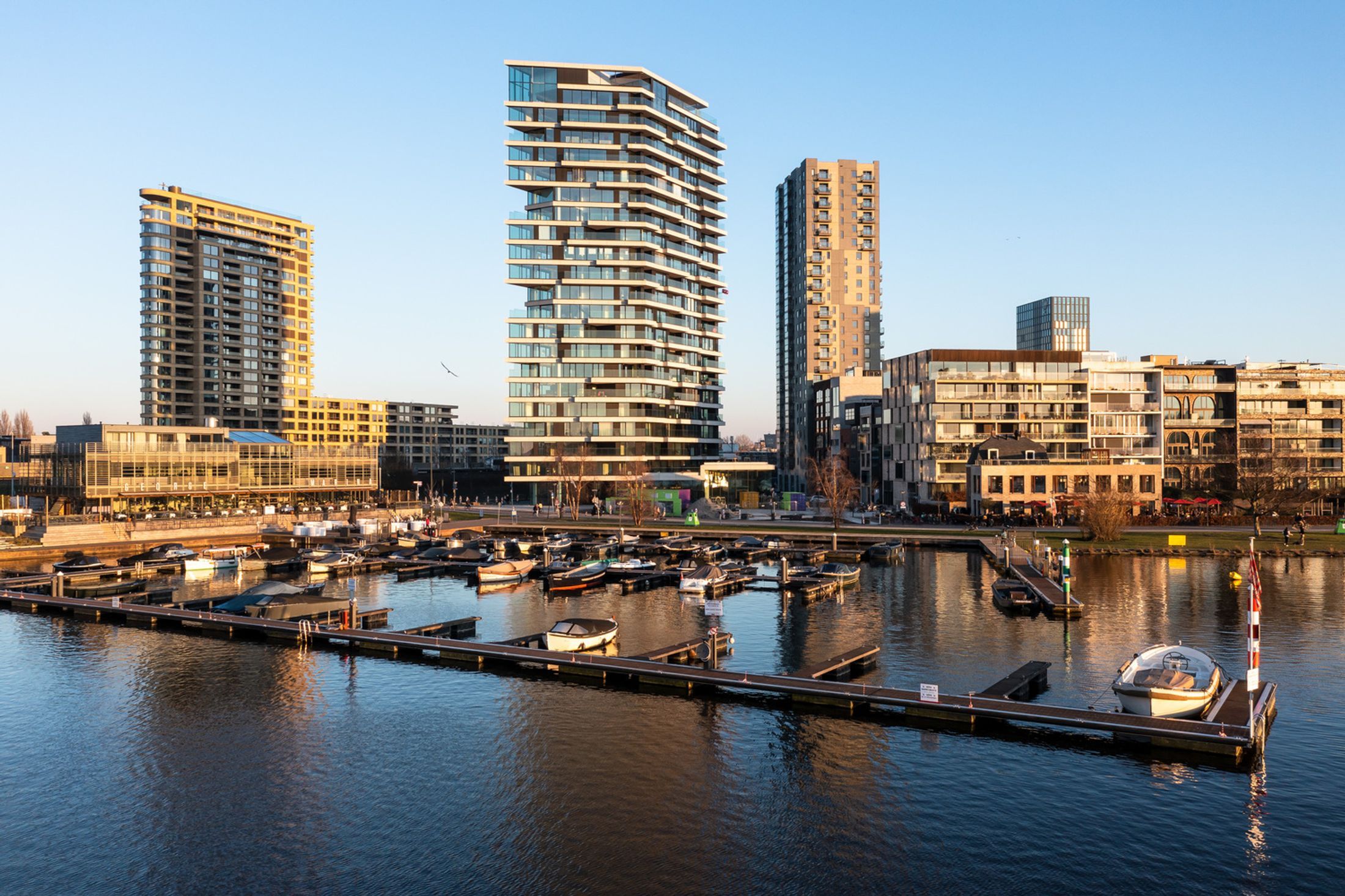
Image by Jannes Linders
Standing 21 floors tall, HAUT is one of the tallest timber-hybrid buildings in the world. In addition, it was certified BREEAM Outstanding – an acknowledgement awarded to only a handful of high-rise residential buildings globally, and the first residential project in the Netherlands to achieve this.
(03)
Sustainable
Carbon Reduction
Bio-based building is gaining momentum all over the world as more and more people embrace the natural qualities of timber. While atmosphere and acoustics are a factor, the most important driver for the increase of timber in residential buildings is the potential to significantly reduce carbon emissions. In HAUT, more than 2000m3 of timber was used, bringing the total reduction to 50% compared to a conventional building. In HAUT, more than 2000m3 of timber was used in the structure alone, significantly reducing the embodied carbon footprint compared to a conventional building. When including sequestration, HAUT’s structure stores some 1,800 tonnes of CO₂.
Sustainable and innovative
Looking for the best ways to give the tower a transparent appearance, with lots of sunlight supplying the building with natural heating and optimal lighting conditions, the team designed a façade that consists largely of (triple) glass and integrated PV panels. Combined with the rooftop photovoltaics the energy-positive exterior generates enough energy to supply the entire building with electricity.
HAUT is a shining example of how innovative sustainability can contribute to the future of buildings, where zero carbon and nature inclusive design will be the norm. The tower features an ATES system, sensor-controlled installations and low temperature underfloor heating, making it one of the most climate friendly high rise residential buildings in Europe. A rooftop garden and nest boxes for birds and bats add to the biodiversity on site.
(04)
Hybrid Construction
Hybrid Construction
The design principle for HAUT was timber where possible, concrete and steel when necessary. As a result, both the foundation, basement and core were built using concrete. This concrete core provides stability to the structure and also contributes to the fire safety of the building.
Looking for ways to use as much timber as technically possible, Arup embarked on a quest for an innovative and affordable technical solution for the mezzanine floors. The result was a custom designed precast timber-concrete composite floor plate developed in close collaboration with Lingotto, Team V Architectuur, contractor J.P. van Eesteren and timber specialist Brüninghoff.
The floor's structural build-up consists of 16 cm cross laminated timber with an 8 cm concrete top layer. The choice for a hybrid floor plate had big advantages for footfall performance, acoustical performance, construction sequence and detailing. Due to the low self-weight of the floor plates, trucks could be loaded more efficiently, resulting in fewer deliveries to the building site in the centre of Amsterdam.
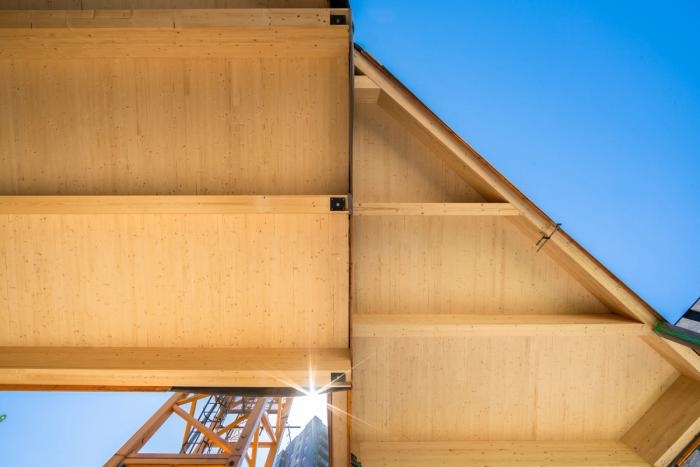

Image by Jannes Linders
HAUT proves that it’s possible to develop truly sustainable residential buildings, following an integrated approach and working closely with all partners involved.
HAUT won the International BREEAM Award 2018.
